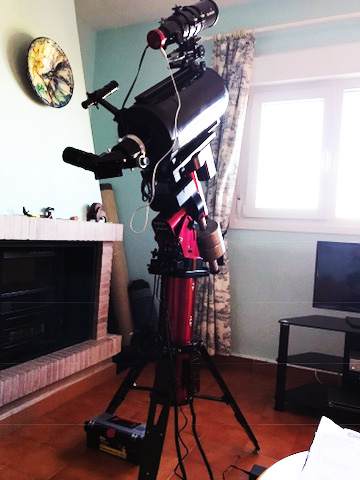Frank Acfield's Jupiter Part 2 from 1 year ago.
 Tuesday, April 15, 2014 at 11:00PM
Tuesday, April 15, 2014 at 11:00PM Above - birds from today's walk in the Sierra Cabrera mountains - now - continued from yesterday:
JUPITER
The stationary point is given as January 21st 1969 so I set this up in SkyX for that date.
The movie shows the movement of Jupiter from December 1968 to April 1969. Note that Uranus also achieves its stationary point shortly after Jupiter.
Things have changed since 1969 - the Data Book quotes Jupiter as having 63 moons by 2008.
My poor quality sketch from the lecture shows a satellite of Jupiter being occulted and the shadow of Jupiter.
 [Your Name Here] | Comments Off |
[Your Name Here] | Comments Off | 







